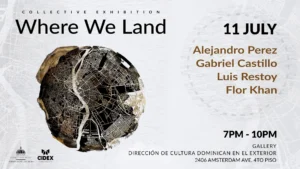By Juan Butten
I have observed a notable shift in the way contemporary art is presented and perceived, especially here in New York City. Increasingly, artists and curators are abandoning the walls of traditional galleries to explore unconventional spaces, such as public places and ephemeral installations. This approach not only challenges expectations about where and how art should be displayed but also invites a broader audience to participate in the artistic dialogue.
One of the most intriguing aspects of using unconventional spaces is the ability to interact with the environment. Squares, parks, subway stations, and other public locations become stages for artistic creation. This type of intervention allows artists to engage with local communities and often provokes spontaneous reactions from passersby. A notable example is Yayoi Kusama’s project “The Obliteration Room,” where a completely white room transforms into a kaleidoscope of colors thanks to the participation of the public, who add colorful adhesive dots. This work is presented in unconventional spaces, blurring the line between spectator and creator.
Furthermore, ephemeral installations offer a unique flexibility that traditional exhibitions cannot match. These works, which often have a limited duration, foster a sense of urgency and exclusivity. The transient nature of these installations invites the public to experience art in a constantly changing context. An example of this is the “Burning Man” festival, where artists from around the world create massive, temporary installations in the Nevada desert. These works are not only visually striking but also foster a sense of community and collaboration among attendees.
The use of unconventional spaces also raises questions about accessibility and the democratization of art. By bringing art to the streets, the exclusivity often associated with galleries is eliminated. This allows a more diverse audience, who may not visit traditional art spaces, to interact with the works. Art thus becomes part of everyday life, integrating into the urban landscape and the community experience.
However, this practice is not without challenges. The lack of a controlled environment can make works more vulnerable to external factors such as weather or vandalism. Additionally, artists must consider the norms and cultural sensitivities of the place, which can limit their creativity. Nonetheless, these challenges can also lead to a richer dialogue and the adaptation of works to their environment.
In conclusion, the use of unconventional spaces for art exhibitions represents a significant evolution in the way art is created and experienced. By taking it to unexpected places, artists not only challenge traditional expectations but also create opportunities for interaction and public participation. This trend not only democratizes access to art but also transforms the urban environment into a dynamic canvas. In a world where art can be found in any corner, we are reminded that creativity and expression can emerge in the most unexpected places.









